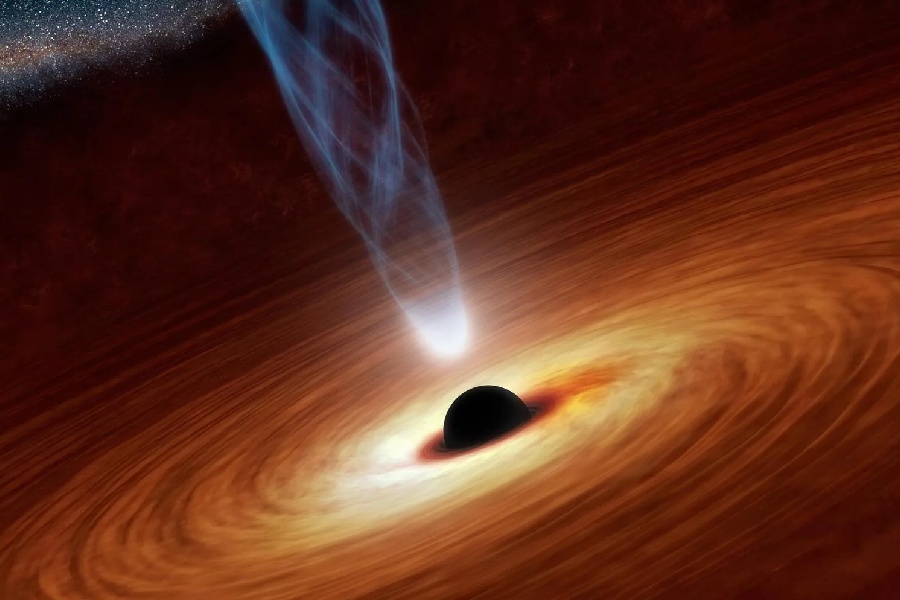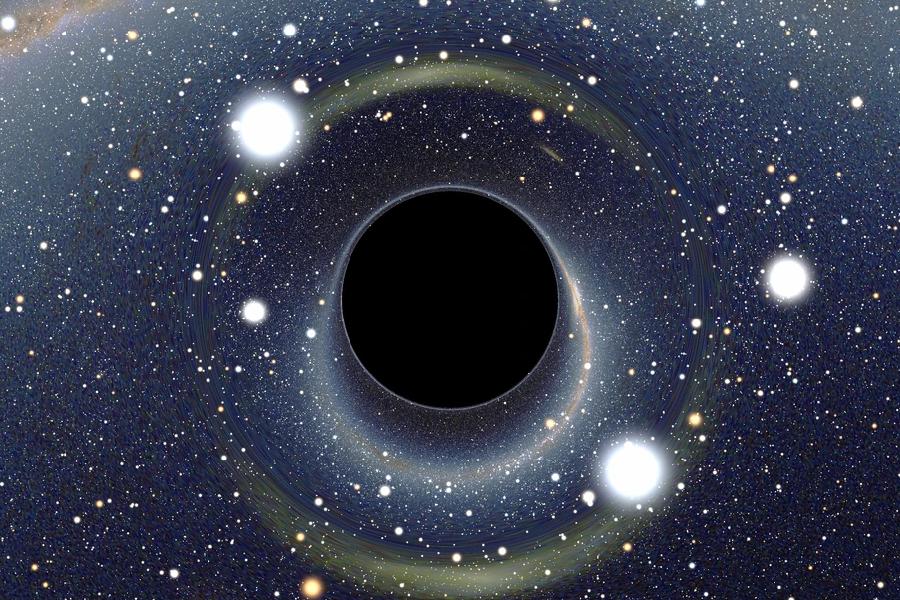Black holes have been a popular theme in science fiction movies; some might even say they have been the talk of the past couple of decades. They fascinate both the public and scientists as they are one of the strangest and most fascinating objects in space, pushing the limits of space, matter, and time. But what about their formation and type? Are there various types of black holes, and how are they classified?
From the microscopic to the mind-bogglingly huge, we will unravel the mysteries around the different types of black holes and the latest discoveries that continue to challenge what we know about physics in extreme environments.

Types of Black Holes
To delve deep into the different types of black holes, we first need to define what a black hole is briefly. A black hole is an area in space with a strong gravitational pull that not even light can escape. Hence, the name.
The universe is full of black holes, each magnificent and unique in its own way. But thanks to recent discoveries, we can now classify between four types of black holes. But you may wonder how a black hole’s size is determined. The most straightforward answer for their classification is according to their mass.
Despite differences in how they form and their masses, all black holes share common properties like infinitesimal density singularities and event horizons from which nothing, even light, can escape once interior.
Stellar black holes form from collapsed stars, while supermassive black holes weighing millions of Suns lie at some galactic centres. There are also smaller primordial black holes and midsize ones from multiple stellar mergers.
Black Hole Variety Show
Stellar Black Holes
These are formed when very massive stars, over 25 solar masses, collapse at the end of their life cycle. The stars undergo a supernova explosion and then gravitational collapse into a stellar black hole, typically 10-24 solar masses in size.
Supermassive Black Holes
Believed to reside at the center of most large galaxies, these extraordinarily massive black holes are about 10,000 solar masses. Supermassive black holes reside in almost every large galaxy. These gigantic beasts have hundreds of thousands to billions of times the Sun’s mass.
Their formation and continual growth from galactic evolution, collisions, and consuming matter is an active area of research in astrophysics. Their masses can be billions of times larger than stellar black holes.
Fun fact: The supermassive black hole in the center of our galaxy– the Milky Way, is called Sagittarius A* and is 4 million times the mass of the Sun.
Intermediate Black Holes
Ranging from hundreds to over 10,000 solar masses, these mid-size black holes still puzzle scientists.
But they help fill in the mass gap between stellar remnants and the giant supermassive category, supporting the theory that supermassive black holes grow from mergers of smaller holes. Dense globular clusters orbiting galaxies may host intermediate-size black holes in their cores.
Micro Black Holes
Far smaller, hypothetical black holes ranging from tiny quantum-scale masses up to asteroid-like sizes have been proposed by certain theories but not observed. Some concepts suggest the early, dense universe immediately after the Big Bang may have birthed miniature black holes.
These primordial black holes would have formed right after the Big Bang from the incredibly dense matter in the early universe. Their diminutive size and weak gravitational fields make observation with current methods extremely challenging.

The Infinite Density – Singularity Sensation
Singularities are like cosmic pinpricks where the known laws of physics and our understanding of the universe seem to go on hiatus. The idea of infinite density might sound a bit mind-bending, but bear with us. In ordinary terms, density is a measure of mass per unit volume.
If you think of a singularity as having zero volume and a finite mass, you end up with an infinite density. It’s as if the universe is packing an immense amount of mass into an infinitesimally small space.
Now, let’s talk about the breakdown of physics at these singularities. Our current understanding of the universe is largely based on the principles of general relativity, beautifully described by Einstein.
However, when we zoom into the heart of a singularity, the equations of general relativity become unruly. They churn out infinities that baffle our mathematical tools and challenge the very foundation of our physical laws.
Black Holes on the Move – Galactic Wanderers
Black holes were long considered stationary within their galaxies. However, observations have revealed the surprising mobility of these cosmic giants, challenging ideas about their role in galactic evolution.
Advanced detectors like LIGO have enabled scientists to study black hole mergers in detail. Some exhibit characteristics indicating that black holes traveled between galaxies before colliding.
Implications for Galactic Evolution Models
Traditionally, a central black hole’s gravity was thought crucial in shaping its host galaxy. But their ability to migrate between galaxies points to a more dynamic interplay with greater complexity.
The motion of black holes between galaxies adds an extra layer of intricacy to these structures involving vast collections of stars, gas, and dark matter bound by gravity. This galactic wanderlust prompts a rethinking of black holes’ influence.
Cosmic Vacuum Cleaners
Black holes can gorge on surrounding cosmic material like a vacuum cleaner sucking up dust. Their intense gravity pulls neighboring stars, planets, gas, and dust toward the event horizon in a swirling vortex.
This matter spins around the black hole, forming a flat, rotating disk called an accretion disk, where particles accelerate to blinding speeds and heat up from friction, reaching millions of degrees. Incredible amounts of energy are released, emitting high-energy radiation like searing X-rays detectable across the universe.
It’s as if Mother Nature’s robotic vacuum cleaner has its own burning hot bagless chamber shining bright with cosmic dust. By studying these emissions, astronomers glimpse processes within the dark hearts of black holes as they messily feast.
Spaghettification – A Cosmic Stretch
Matter approaching a black hole encounters intense tidal forces that stretch objects apart, referred to as “spaghettification” by astronomers.
The difference in gravity from the black hole between the near and far sides of an object grows so strong that the object elongates like pasta squeezed through a spaghetti maker.
Any stars, planets, or material would first compress into thin strands before reaching the event horizon. Eventually, the extreme forces snap even mighty stellar structures down to their atomic cores.
Nothing withstands the gravitational shredding of a black hole, compressing all consumed matter into the core’s infinite density.
Conclusion
And there you have our journey into the wondrous varieties of these gravitational monsters known as black holes. From the tiny products of the Big Bang to the giants at galactic centers, we explored stellar-mass black holes along with their intermediate, supermassive, and hypothetical miniature kin.
We took you through event horizons and cosmic spaghettification rides while learning about these objects anchored deep in the fabric of our universe – both elusive and ubiquitous. Black holes remain dynamos of mystery; their secrets continue unfolding.
But we hope you have now glimpsed the range across types of black holes and their common, bizarre nature where our understanding of physics falters. As these exotic objects continue intriguing us with new discoveries, unraveling further diversity may await us in the deep cosmos ahead.
